Angela Ackerman's Blog: Writers Helping Writers, page 20
July 23, 2024
Five Vehicles for Adding Subtext to Dialogue

Realistic, evocative dialogue is an important part of any successful story. We need our characters��� interactions to be authentic, consistent, and engaging to draw readers in to what���s happening. So when we���re learning to write, we spend a lot of time on mechanics���learning all the grammar and punctuation rules. But proper form is just the first step.
When writing strong dialogue, we often forget that real-life conversations are rarely straightforward. On the surface, it may seem we���re engaging in simple back-and-forth, but if you look deeper, to some degree our conversations are carefully constructed. We hide our emotions, withhold information, dance around what we really mean, avoid certain topics, downplay shortcomings, or emphasize strengths���all of which leads to exchanges that aren���t totally honest.
Completely candid dialogue scenes fall flat because that���s not the way people converse. Subtext plays a huge role in conversation. It���s often tied to how characters are feeling, which can trigger readers��� emotions and increase their engagement. So we need to include this crucial element in our dialogue scenes.
Simply, subtext is the underlying meaning. Hidden elements the character isn���t comfortable sharing���their true opinions, what they really want, what they���re afraid of, and emotions that make them feel vulnerable���constitute the subtext. They���re important because the character wants them hidden. This results in contradictory words and actions.
A Subtext ExampleConsider this exchange between a teen-aged daughter and her dad.
���So how���d the party go?���
Dionne plastered on a smile and buried herself in Instagram. ���Great.���
���See, I knew you���d have a good time. Who was there?���
Her mouth went dry, but she didn���t dare swallow. Despite the hour, Dad���s eyes shone and searched, spotlights carving her mocha-infused fog.
���The usual. Sarah, Allegra, Jordan.��� She shrugged. Nothing to see here. Move along.
���What about Trey? I ran into his mom at the office yesterday and she said he was going.���
���Um, yeah. I think he was there.��� She scrolled, images blurring.
���He sounds like a good kid. Maybe we could have him and his mom over for dinner.���
Her stomach lurched. ���Oh, I don���t know.��� Her fingers trembled, so she abandoned the phone and sat on her hands to keep them still. ���We don���t really hang with the same crowd.���
���Well, think about it. Couldn���t hurt to branch out and get to know some new people.���
Dionne blew out a shaky breath. How could her dad be so smart at work and so stupid about people?
Something happened at the party involving a boy Dionne���s now avoiding, and she clearly doesn���t want her father to know about it. While Dad is kept in the dark, the reader becomes privy to Dionne���s true emotions: nervousness, fear, and possibly guilt.
This is the beauty of subtext in dialogue. It allows the character to carry on whatever subterfuge she deems necessary while revealing her true emotions and motivations to the reader. It���s also a great way to add tension and conflict. Without subtext, this scene is boring, just two people chatting. With it, we see Dionne desperately trying to keep her secrets while it becomes increasingly difficult���even unhealthy���to do so.
So how do we write subtext into our characters��� conversations without confusing the reader? It just requires combining five common vehicles for showing emotion. Let���s look at how these were used in the example.
1. DialogueWe all go a little Pinocchio when we start talking, and Dionne is no exception. Her words scream status quo: nothing happened at the party and she doesn���t feel anything in particular. But the reader can clearly see this isn���t the case.
2. Body Language
Nonverbal communication often reveals to readers the truth beneath a character���s words. Notice Dionne���s body language: the plastered-on smile, frantic social media scrolling, and trembling hands. Readers hear what she���s saying, but her body language clues them in that something else is going on.
3. Visceral ReactionsThese are the internal physical responses to high emotion. They���re not visible, but the point-of-view character will likely reference them, since they���re so strong. Here, Dionne���s dry mouth and lurching stomach contradict her claims that everything went swimmingly at the party.
4. ThoughtsBecause they���re private, thoughts are honest. Dionne���s mental musings (nothing to see here; move along) show that she desperately wants her father to drop this line of questioning. And her final bit of internal dialogue reinforces that she knows something he doesn���t. Because there���s no reason for characters to disguise their thoughts, this can be the best vehicle for showing readers the truth behind the words.
5. Vocal CuesWe choose our words carefully when we���re hiding something; we may even do certain things with our body to fool others. But when emotions are in flux, the voice often changes, and at first, there���s nothing we can do to stop it. Shifts in volume, pitch, timbre, and speed of speech happen before the character can force the voice back into submission. So variations in vocal cues can show readers that not all is as it seems.
Nonverbal vehicles are like annoying little brothers and sisters, tattling on the dialogue and revealing true emotion. Put them all together and they fill out the character���s narrative and paint a complete picture for readers. And you���ll end up with nuanced and emotionally layered dialogue that can intrigue readers and pull them deeper into your story.
The post Five Vehicles for Adding Subtext to Dialogue appeared first on WRITERS HELPING WRITERS��.
July 17, 2024
Phenomenal First Pages Contest

Hey, wonderful
writerly people!
It���s time for Phenomenal First Pages, our monthly critique contest. So, if you need a bit of help with your first page, today’s the day to enter for a chance to win professional feedback!
Entering is easy. All you need to do is leave your contact information on this entry form (or click the graphic below). If you are a winner, we’ll notify you and explain how to send us your first page.
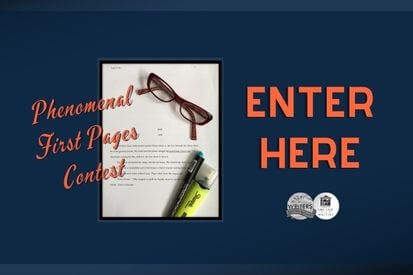 Contest DetailsThis is a 24-hour contest, so enter ASAP.Make sure your contact information on the
entry form
is correct. Three winners will be drawn. We will email you if you win and let you know how to submit your first page. Please have your first page ready in case your name is selected. Format it with 1-inch margins, double-spaced, and 12pt Times New Roman font. All genres are welcome except erotica.Sign Up for Notifications!
Contest DetailsThis is a 24-hour contest, so enter ASAP.Make sure your contact information on the
entry form
is correct. Three winners will be drawn. We will email you if you win and let you know how to submit your first page. Please have your first page ready in case your name is selected. Format it with 1-inch margins, double-spaced, and 12pt Times New Roman font. All genres are welcome except erotica.Sign Up for Notifications!If you���d like to be notified about our monthly Phenomenal First Pages contest, subscribe to blog notifications in this sidebar.
Good luck, everyone. We can’t wait to see who wins!
PS: To amp up your first page, grab our First Pages checklist from One Stop for Writers. For more help with story opening elements, visit this Mother Lode of First Page Resources.
The post Phenomenal First Pages Contest appeared first on WRITERS HELPING WRITERS��.
July 16, 2024
Need to Get a Stubborn Character Moving? Use an Amplifier
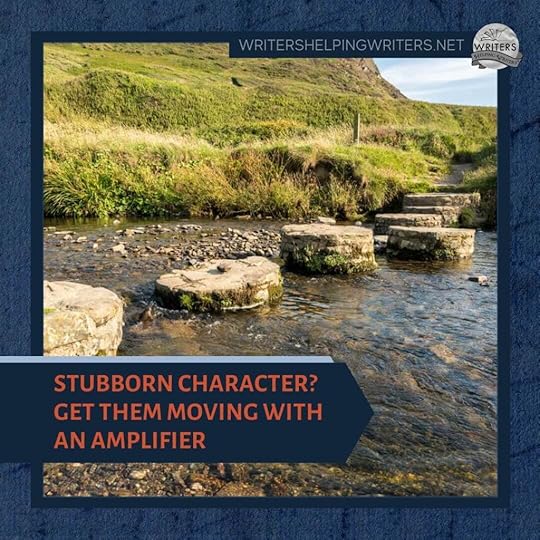
If you���ve researched story structure at all, you know there are many models out there, and they���re all slightly different. The most popular forms tend to follow the three-act structure, which resonates with many readers regardless of genre or format.
Act 1 sets things up for readers by establishing the protagonist, their story goal, the setting, and all the basics.Act 2 builds on that information, introducing escalating conflicts (both internal and external) that block the character from their objective.Act 3 resolves the story conflict in a showdown that determines whether the protagonist succeeds or fails at achieving their goal.Within this simple framework, certain events need to happen not only to progress the plot, but also to encourage the character to become more self-aware, make positive internal progress, overcome setbacks, and so on. This journey is essential if your character is to progress realistically from Once upon a time to The End. It���s not an easy path, though, and sometimes characters balk; they���d rather stay where it���s comfortable and safe, thank you very much. The status quo may be stagnant or even unhealthy, but it���s what they know.
But a stalled character means a stalled story���which is death for reader engagement. At times like these, your protagonist needs a nudge (or a full-fledged shove) to reach the next important story event. This is where amplifiers come in.
An emotion amplifier is a specific state or condition that influences what the character feels by disrupting their equilibrium and reducing their ability to think critically.
Distraction, bereavement, illness, and exhaustion are examples of amplifiers that create friction.
To illustrate how amplifiers get characters moving while also supporting story structure, let���s examine a popular (and my favorite) model: Michael Hauge���s Six-Stage Plot Structure, which is beautifully explored in his book Writing Screenplays that Sell. In the right order and at the right places, these points move the character through the story in a logical fashion without sacrificing pace.
Six-Stage Plot Structure Model
Setup: The protagonist is living in their everyday world, but they���re emotionally stuck or dissatisfied in some way.
Opportunity (Turning Point 1): Called the catalyst in other models, this point consists of a challenge, crisis, or opportunity that pushes the protagonist into pursuing a certain story goal. That decision sets them on a journey that sweeps them out of their ordinary world and into a new one.
New Situation: The protagonist is adjusting to their new world, figuring out the rules and their role while dealing with obstacles that crop up. At this point, the character is largely unaware of their own faults and how they contribute to a lack of fulfillment.
Change of Plans (Turning Point 2): Something happens that creates an awakening for the protagonist, clarifying what they need to do to achieve their goal. They begin moving purposefully in that direction.
Progress: Fully conscious of their goal and their new plan, the protagonist takes steps toward success by gaining knowledge, honing skills, or gathering resources and allies. Although they may be growing in self-awareness, they���re not yet able to fully comprehend the depth of internal change that needs to occur.
Point of No Return (Turning Point 3): The protagonist���s situation becomes more difficult than ever as a death or significant loss pushes their goal seemingly out of reach. Forced to face what���s holding them back (their flaws, fears, lies they���ve embraced, and so on), they commit to changing their dysfunctional methods and evolving in the pursuit of their goal.
Complications and Higher Stakes: Though dedicated to personal change and healthier methods, the protagonist is assailed by escalating conflicts and increased stakes that make it more important than ever to reach their objective.
Major Setback (Turning Point 4): The protagonist experiences a devastating setback or failure that makes them doubt everything. Their plan forward will no longer work, and all seems lost. Finally rejecting any beliefs, biases, or doubts that were holding them back, they adapt their plan.
And so on���
Amplifiers in Story StructureThe flow of a story seems logical when seen through the lens of plot structure, but guess who really dictates this little road trip? Your characters���who don���t always cooperate.

Characters tend to resist change, especially the internal kind. An emotion amplifier pushes them from one point to the next with opportunities for decisions that add volatility, increase vulnerability, and make the situation worse. As the story progresses, particularly in the second half, amplifiers can also begin revealing growth as the characters adapt to new challenges and make better choices.
Look at how amplifiers have been used to this effect in some popular movies and books:
Inebriation: In Sweet Home Alabama, Melanie, who has spent years creating a new life for herself in Manhattan, returns to her hometown to get a divorce, which her estranged husband is reluctant to grant. Frustrated by her lack of success, she gets drunk during the Progress stage, turns nasty, and outs her best friend. This leads directly to the Point of No Return, when she awakens in a hungover stupor and realizes that her horrible behavior has caused her husband to finally sign the divorce papers. She should be excited to be able to put her past behind her and fully recreate herself, but she realizes she���s been pursuing the wrong goal all along.
Instability: The Nostromo vessel is floating in outer space, light years away from help, when an alien makes its way onboard (Alien). In the Complications and Higher Stakes phase of this classic movie, as crew members are picked off one by one, the captain is forced to pursue the alien into the air ducts to try to kill it. He fails, leaving protagonist Ripley as the senior officer with an enhanced security level that enables her to discover the Nostromo���s true mission, which has rendered her and her crew expendable (Major Setback).
Hunger: In Cormac McCarthy���s The Road, a father and son travel to the coast in a hard, post-apocalyptic world. During the Progress stage of the story, the father���s hunger drives him to enter a building he otherwise would have avoided. What they find there sends them running for their lives, questioning humanity���s right to survive. They stick to the woods, wet, cold, and hungrier than ever. A quote explains the father���s mindset at this point: ���He was beginning to think that death was finally upon them.��� Their foray into the house of horrors, driven by extreme hunger, has propelled them to their Point of No Return.
In each of these examples, an amplifier is used to drive the character from one turning point to the next, a technique that could work just as effectively for you. Once you���ve created a basic outline for your project, explore amplifiers that could be placed strategically to propel the character into the various stages of their story.
Choosing the Right AmplifierYour story���s theme can deliver the perfect amplifier for informing a character���s choices and actions. It may be the same one employed repeatedly (as isolation is used in the movie While You Were Sleeping), or a variety of amplifiers that circle the overall message. If you know the theme for your story, consider options that reinforce it while also steering the plot events.
Genre can also provide ideas. A bleak, post-apocalyptic story like The Road is a natural setting for hunger, cold, and exhaustion. Likewise, attraction and arousal are common amplifiers in romance plots and subplots. Thrillers and action stories often include multiple instances of danger, stress, and mortal peril.
Additional Research
Looking for more information on amplifiers? Check out The Emotion Amplifier Thesaurus. With it’s easy-to-use list format and comprehensive how-to front matter, this resource can show you how to use amplifiers to motivate your characters, add meaningful conflict, and further your story.
You can see all the entries in this book here.
The post Need to Get a Stubborn Character Moving? Use an Amplifier appeared first on WRITERS HELPING WRITERS��.
July 11, 2024
Unlock Your Funny Bone: Writing Humor Is Easier Than You Think!
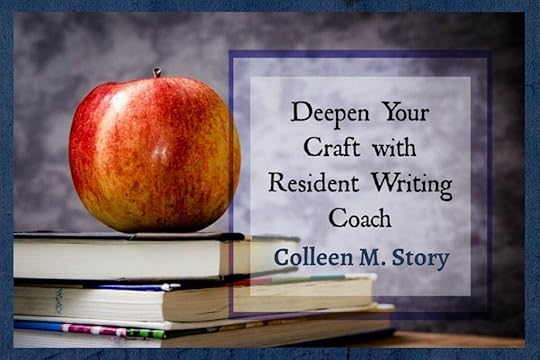
I���ve rarely attempted to be funny in my writing.
There are a couple of reasons for that. One, my stories tend to lean toward the serious side. The characters deal with difficult situations. There is tension, action, and mystery. Humor didn’t seem to fit.
Two, I thought I wouldn���t be any good at it. I tend to be more serious overall. I do have a wry sense of humor that my friends and family seem to appreciate. But I never thought I could translate that onto the page.
Until my most recent historical fantasy, The Curse of King Midas.
This time, I added humor, and I got a lot of positive feedback on it from readers. Plus, it made the writing a lot of fun!
If you, too, may think you���re not ���good��� at writing humor, but in your heart of hearts, you���d like to try it, I have some tips that may help.
1. Approach Your Story DifferentlyThere���s one reason that humor was on my mind when I started writing this story: ultimately, it was going to be a musical.
At least, that’s how it started. A talented friend who is also a music composer asked me if I’d consider writing the story of the mythical King Midas. He was toying with the idea of making a musical out of it but told me that the best musicals are based on books.
Would I write the book?
I was between books and needed a new project, so I researched the idea. I was delighted to discover that King Midas was a real person. (More about that in this post on how to combine myth with history to create historical fantasy.)
That bit of knowledge gave me the inspiration I needed for the main story, but there was one more piece I felt I needed to have: humor.
Most musicals have humorous scenes in them. I should know���I’m a horn player and have played in the pit orchestra for countless productions.
When you���re in the pit, you see the musical performed numerous times. It���s easy to get bored, but I always look forward to the funny scenes. There is often some character or group of characters that lighten the mood at various times during the show.
I needed something like that in my story. Considering how it was usually done in musicals helped me come up with a way that worked perfectly for my writing style.
Thought: If you want to add humor to your story, imagine how you may approach it differently. What if it were to form the basis for a musical, play, or movie script? How might that change the way you write it?
2. Use Your CharactersAuthors use humor in many different ways. They may play with word choice to arouse humor through sound. They may use asides (in parentheses) to state the obvious, allow the narrator to make fun of themselves, or make a witty remark. They may use irony or exaggeration.
So far, I haven���t found that any of these methods come easily to me. But I knew from experience that in most musicals, it���s certain characters that create the humor.

With that in mind, I chose King Midas��� three advisors. Since I���m a ���pantser��� or discovery writer, I didn’t create them beforehand. I just started imagining these three advisors standing near the king and what they might be like.
One of my Goodreads reviews may describe them best:
���The characters and plot are skillfully introduced with some interesting supporting characters including the king’s three advisors who are deliberately quirky and come across as a blend of the three wise men and the three stooges. One of them talks at cross purposes, always saying the opposite of what he means which takes a bit of getting used to and is surprisingly fun.���
Thanks, Gavin!
Once I had these characters in mind, I was good to go. Whenever they entered a scene, the humor seemed to flow naturally.
My serious nature still comes through in the story. The plot deals with hefty themes of loss and revenge. But I now know how effective it can be to have a few humorous characters lend a little comic relief now and then.
Thought: Could your story use a quirky character or two (or three) that might add humor where needed? What characters might they be? How would their interaction create a laugh for your reader?
3. Ask Yourself: Am I Laughing?I am producing the audiobook version of The Curse of King Midas at the time of this writing, so I’m listening to each scene to check for errors. I’ve edited the draft so many times I have each scene nearly memorized. Yet I still chuckle when the advisors come in.
If you���re laughing when you���re writing your humorous scene, there���s a good chance readers will laugh too. It���s even better if you���re still laughing after multiple drafts.
4. Listen To Your Beta ReadersThe final test is to see if others get your sense of humor.

This is tricky because humor is just as subjective as everything else���perhaps more so. The humor in my story is wry and sarcastic. That’s a style many people enjoy, but some just don���t get it.
A few of my beta readers were confused instead of amused at my advisors. But they were in the minority. Most readers loved them and made a point to say so in their feedback. (Another reason why it���s a good idea to have several beta readers!)
Just as not everyone will love your story, not everyone will get your sense of humor. It���s when most readers talk enthusiastically about your humorous scenes that you know you���ve aced this facet of storytelling.
Give It A Try!I never thought I’d write humorous scenes in my stories, but I’m so glad I did. It���s always rewarding when readers enjoy our stories, but I think it���s even better when they get a laugh or two out of them.
If you have a story that you think would benefit from a little humor, I encourage you to give it a try!
Note: Get your free sample of The Curse of King Midas along with insider news about Colleen’s writing life here!
The post Unlock Your Funny Bone: Writing Humor Is Easier Than You Think! appeared first on WRITERS HELPING WRITERS��.
July 9, 2024
Could a Raptor Play the Protagonist Role?
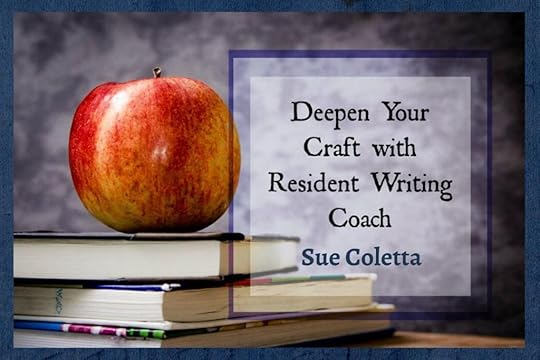
Raptors are some of the most successful predators on the planet. From owls, eagles, and vultures to hawks, falcons, and other birds of prey, raptors are skilled hunters with incredible senses, like binocular vision, that help them detect prey at far distances. The secretary bird even carries mouthfuls of water back to the nest for her young ��� one of the few avian species to quench a chicks��� thirst.
If a raptor was a character in a book, they seem like the perfect villain on the surface. After all, they kill and consume adorable critters like chipmunks, squirrels, mice, monkeys, birds, fish, and old or injured animals. As readers, we���d fear the moment their shadow darkened the soil.
What we may not consider right away is how tender raptors are with their young, or that they only take what they need to feed their family and keep the landscape free of disease from rotting meat and sick animals, or what majestic fliers they are. Raptors have many awe-inspiring abilities.
Take, for example, the Andean condor, the largest flying land bird in the western hemisphere. In the highest peaks of the majestic Andes, the largest raptor in the world hovers high in the sky in search of its next meal ��� a carcass or old/injured animal to hunt. Andean condors have a wingspan of over ten feet. If one flew sideways through an average living room with eight-foot ceilings, the wings would drag on the floor!
How could we turn a massive predator like the Andean condor into a hero? It���s difficult to offset their hunting abilities and diet with the innocence of their prey, but not impossible.
A layered characterization holds the key. It doesn���t matter who your protagonist is or what they do. With proper characterization, a raptor or killer can play any role.
Go Deeper than the Three Dimensions of Character1st dimension: The face they show to the world; a public persona
2nd dimension: The person they are at home and with close friends
3rd dimension: Their true character. If a fire broke out in a cinema, would they help others get out safely or elbow their way through the crowd?

A raptor-type character needs layers, each one peeled little by little over time to reveal the full picture of who they are and what they stand for. We also need to justify their actions so readers can root for them.
A perfect example is Dexter Morgan, vigilante serial killer and forensic blood spatter analyst for Miami Dade Police. Why did the world fall in love with Dexter?
What makes Dexter so fascinatingly different is that he lives by a code when choosing his victims ��� they must, without a doubt, be murderers likely to strike again. But he didn���t always have this code. In the beginning, he killed to satisfy the sick impulses from his ���dark passenger.��� If it weren���t for Dexter���s adoptive father and police officer, Harry Morgan, who educated his son to control his need to kill and established tight guidelines for Dexter to follow (the code), he would have been the villain.
Readers accept his ���dark passenger��� because he���s ridding the world of other serial killers who could harm innocent people in the community. And that���s enough justification for us to root for him. We���re willing to overlook the fact that he revels in each kill and keeps trophies. We even join him in celebrating his murders ��� and never want him caught.
Jeffrey Deaver couldn���t have pulled this off if he showed all Dexter���s sides at the very beginning. It worked because he showed us each layer to the character of Dexter Morgan over time.
The Characterization for Vigilante Killers Cannot be RushedWhen I created this type of character, he started as the villain for two and half novels while I dropped hints and pieces of truth like breadcrumbs. It wasn���t until halfway through book four that the full picture of who he really was and what motivated him became evident.
So, go ahead and craft a raptor as the protagonist of your story (as an antihero). When characters are richly detailed psychologically, readers connect to them. Perhaps a part of us wishes we could enact justice like they do.
If crafted with forethought and understanding, your raptor may become your most memorable character to date. Just go slow and really think about how much of their mind to reveal and when. Who knows? You may create a protagonist readers will analyze for years to come!
*It���s unfair to draw a parallel between raptors and vigilante killers, but the idea came to me while watching a nature documentary. Make no mistake, I adore raptors.
The post Could a Raptor Play the Protagonist Role? appeared first on WRITERS HELPING WRITERS��.
July 4, 2024
Using Clothes to Characterize
���Fashion is a language that creates itself in clothes to interpret reality.���

This quote by Karl Lagerfeld is pretty heady. I���m still chewing on it, but what I gather is that clothing and other appearance choices are one way we interpret and reflect reality���the reality of who we are, of our passions. Sometimes, it���s the reality we want to project (as opposed to what���s actually real).
In this way, a character���s clothes can say a lot about them as individuals. As writers, we should always be looking for characterization opportunities that allow us to reveal truths about our characters in natural ways. And clothing choices, as mundane as they may seem, can be a great way to do this. Just zero in on a few details about your character���s clothes, and BAM! You���ve revealed crucial information without having to state it outright.
So, what can fashion choices tell us about a character?
Jobs and CareersDoes your protagonist have a job that requires a uniform? Have them head into the coffee shop wearing their hospital scrubs, stained mechanic���s coveralls, three-piece suit, or steel-toed boots and work belt. By referencing their work clothes, you won���t have to mention their profession overtly.
Temporal and Geographic MarkersIf the story takes place in a different time or location, your character���s fashion choices can clue readers in to the where and when. Show your protagonist in crinolines and a corset, a tartan kilt and clan badges, or bellbottoms and a halter top. Use context clues to introduce futuristic, paranormal, or otherworldly wardrobe items. Let a few carefully chosen clothing details show readers where and when your character is living.
PersonalityBecause clothing choices are deeply personal, they can reflect certain aspects of personality. Looking at the main cast of Stranger Things, you wouldn���t define them as haute couture; they���re self-defined nerds with little fashion sense, and their clothes reflect this. On the other end of the spectrum, we have Cruella from the movie of the same name. Antisocial is her defining trait, and her fashion choices consistently fly in the face of what���s popular, traditional, and accepted.
A character who is flamboyant will dress differently than someone who is simple or traditional or lazy. Our personality absolutely influences how we dress, so know your character���s dominant traits, and outfit them accordingly.
IdentityIn specific cases, clothing can quickly establish certain aspects of identity. Traditional cultural garb, like a sari, kimono, or yarmulke, can point to the character���s heritage. The same is true if their dress associates them with a certain group of people, such as the LGBTQ+ community.
Interests and HobbiesWant to show your character���s interests? Put them in fan merch from a favorite band or a t-shirt sporting a social justice slogan. Reveal their K-Pop obsession by having them show up to a block party looking like a member of BTS. One of the things that makes us each unique is our individual passions. Show those off for your character through their wardrobe.
IndividualityYou can���t learn much from someone who looks just like everyone else. But if they take pains to individualize their appearance, it says something about them. Wearing colorful knee socks with a school uniform, only wearing certain colors, or making their own uniquely styled clothes are all ways to show that a character is swimming against the current. More information is needed for readers to know exactly how or why they���re different, but clothing is a good starting point for revealing this desire to break from the pack.
Financial StatusAs we all know, clothes come with a variety of price tags. Some are cheap while others are wildly expensive. A character who dresses in name brands, wears only natural fibers, or shops at trendy boutiques is likely to have a bigger bank account than someone wearing hand-me-downs or generic clothes from Target.

Of course, the expensive clothes could be a smokescreen meant to convey the image of wealth. We see this with Coriolanus Snow in The Ballad of Songbirds and Snakes.
This book, like the original Hunger Games, opens on the day of a reaping, when Snow will learn which tribute he���ll be mentoring. Assignments reflect prestige and status, which is especially important for Snow because his family has secretly fallen into poverty. He���s got to maintain appearances, and we see this in the opening pages as he meticulously picks out his clothes for the big announcement. He has splurged on a black-market pair of pants, and his tired shirt is transformed with dyes, extra purloined cloth, and a fashion-savvy cousin���s needle and thread. He shows up to his meeting looking like any wealthy Capitol citizen, but it���s all a ruse that is carried off by his clothing.
This is something to keep in mind���that looks can be deceiving, and some fashion choices are meant to portray an image that isn���t real. Those false choices, in and of themselves, can be very telling to readers.
SecretsSo, while clothing can reveal truths about a character, it can also be used to conceal those truths. Fashion choices could be deliberately made to hide things, such as
Scars or skin conditionsSigns of physical abuseA pregnancyTheir financial standingAn aspect of their identity or heritage that they���re rejectingBeliefs that would make them unpopularInsecurity and self-doubtTheir emotional stateDoes your character have something to hide? How could you show that through their clothing?
Mental/Emotional StateSometimes, a person���s fashion choices can hint at how they���re doing mentally or emotionally���namely, when their clothes change unexpectedly and no longer match their personality. If a fashion-conscious or fastidious character starts living in threadbare leggings and stained shirts, that���s a clue that something is going on with them. Likewise, when an emo character suddenly starts wearing bright colors and clothing with cheery slogans, readers will sit up and take notice because it doesn���t fit with what they know about them.
Final ThoughtsIt���s clear that clothing can be used to reveal certain truths. But the clothes themselves don���t always allow for a complete interpretation because they can mean different things. Rumpled sweats and mismatched socks may be a sign of emotional distress, but it also could just mean the character is a slob. Or their washing machine is broken. For clarity about the why, pair clothing choices with dialogue, thoughts, body language, and environmental factors to provide context.
And lay the foundation early for readers about what���s normal for the character. Know their personality, preferences, interests, and personal identity well. Identify what they embrace about themselves and what they���ll downplay. Once you���ve really gotten to know your character, you can write them clearly and consistently for readers. Then, when their appearance changes, readers will know something is going on, and the meaning behind the shift will be more obvious.
I hope this post gives you some ideas about how to make your character���s clothes do double-duty. But, of course, it doesn���t cover everything. Can you think of other truths wardrobe choices can reveal about a character?
The post Using Clothes to Characterize appeared first on WRITERS HELPING WRITERS��.
July 2, 2024
Three Emotion Problems to Avoid in Your Story Opening
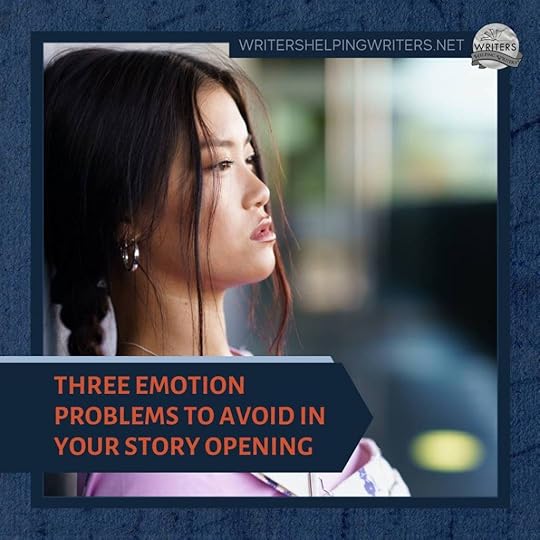
As I���m sure you���ve heard roughly a gajillion times, your story���s first pages are very important. Editors and agents typically request just a portion of your story���s opening, and potential buyers read only a sampling when they���re looking for books to buy. So whichever publishing route you take, those first pages are the only chance you get to win over the gatekeepers���to introduce your story in a way that sucks them in and makes them realize they simply have to have it.
There are a lot of elements you want to include in your story opening, but I���d like to focus on the one that plays a huge part in winning over readers: emotion. If you���ve hung around Writers Helping Writers at all over the past ten years, you���ve heard Angela and I nattering on about the importance of character emotion in our stories. That���s because we believe it���s��the key to triggering the reader���s emotion. The character is the one readers will relate to, the one who will make the reader��feel something as they���re turning pages. So we have to convey the character���s emotions as early as possible, in a way that will engage readers. Otherwise, that first sampling is all they���re going to see.
Thanks to the Phenomenal First Pages contest that runs monthly at our blog (subscribe here if you’d like contest notifications), I���ve read quite a few story openings, and I see the same emotion-related problems cropping up over and over. I���d like to address those today.
Not Enough EmotionIt���s not uncommon for me to get all the way through someone���s first page and realize that I have felt���nothing. My emotions haven���t been stirred at all. And when I look back over the sample, I realize it���s because the character hasn���t felt anything, either. If the reader can���t tell what the character is feeling, how are they supposed to know how to feel themselves? And if a scene event doesn���t affect the character���s emotions, why does it matter?
The key here is that the author needs to make sure something impactful is happening. Maybe this comes in the form of a conversation, where the protagonist is reacting to the information being shared or the character who���s sharing it. It could be a moment between friends that shows how important the BFF is to the protagonist. Maybe it���s an actual event or occurrence that has meaning, such as a wedding, a job interview, or the cat yucking on the carpet when the character���s running late for work.
Once you���ve ensured that meaningful things are going on, the character will need to respond appropriately to what���s happening, even in a small way. Which leads us to problem #2.
Emotion that Has Been ToldWhile it���s important to get the character���s emotional state across to readers, that���s unfortunately not enough. We have to do it in a way that engages their emotions. Engagement rarely results from telling, because telling doesn���t pull readers in. It takes them out of the active role of a participant in the character���s story and puts them at a distance, just sitting back and listening to events being told to them.
On the other hand, when we��show that emotion, it seems more real to readers. They feel like they���re involved in the character���s experience. Their own feelings are stimulated and a bond begins to form, one that will pull the reader further into the story. For instance, here���s an example of emotion that has been told:
He was afraid.
And here���s the same emotion being shown:
His skin felt like it was trying to glide to the back of his body. (Tad Williams, Otherworld series)
Both of these descriptions express the same emotion. But the second one gives you an impression of what that character might physically be experiencing in that moment. We���ve all had that ���crawling flesh��� sensation; when we see the character going through it, it triggers our own emotional memories and helps us to associate better with the character, inviting us into his experience.
Here���s another example of emotion that has been shown, from Gennifer Choldenko���s��Al Capone Does My Shirts:

My face burns. My ears heat up like two heaters attached to my face.
The author doesn���t need to say that the boy is embarrassed; the physical indicators do that for her. We���ve experienced that feeling before, and we get a hint of it through the use of the bodily cues associated with that emotion.
It���s important to keep in mind that emotional responses don���t have to be big to be effective. Maybe��a vocal cue can be used, such as the volume of the voice increasing or decreasing. The character���s hands may start to fidget, or their body posture may shift. Even something as minor as a sigh or an eyebrow being raised can indicate a stirring of emotion. Use the character���s voice, body language, or even their thought process to help you show their emotional state in small ways, which can help you sidestep another emotion-related problem.
Too Much EmotionJust as too little emotion is problematic, so is an overabundance of it. Melodrama happens when a character���s emotional responses are over the top and don���t make sense for the situation. This is a problem because it���s not authentic, and anything inauthentic is going to create distance for the reader as they realize something is ���off��� and subconsciously pull back.
The best way to avoid melodrama is to know your character���s emotional range. Each person has a unique range of emotions, meaning, you can have two people in the same situation and they���ll express themselves differently. Knowing what this looks like for your character will enable you to write their responses in the way that best fits their personality.
So think of that range as a spectrum���a straight line with demonstrative on one end and reserved on the other. Ask yourself: Under normal circumstances, where will my character fall on this spectrum? If you can figure this out in advance, you���ll have a snapshot of how they���re likely to respond to everyday scenarios, and you can write their reactions consistently.
It���s also good to remember that emotions don���t bounce all over the place; they follow a continuum. So, if your character starts the scene contented but will become angry at some point, you���ll need to move him gradually toward that end emotion. Maybe you start by adding something that causes him to become irritated. Then he moves to frustration. And finally���anger. A character shouldn���t jump from contentment to rage unless there���s a psychological reason for doing so. Knowing the natural progression of emotions will enable you to write your character���s responses logically and keep you from falling into the melodrama trap.
Listen, I understand the pressure to get our first pages right. There���s a lot riding on them, but the emotion piece can definitely contribute to success. With these tips, you should be on your way toward strengthening your opening and encouraging readers to become more fully invested in the character and the story. For more information on how to write character emotion well, you can also reference the second edition of The Emotion Thesaurus.
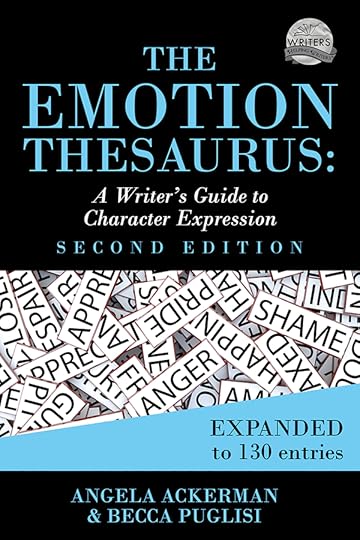 This edition of The Emotion Thesaurus, in its easy-to-navigate list format, will inspire you to create stronger, fresher character expressions and engage readers from your first page to your last.
View the list of 130 emotions
This edition of The Emotion Thesaurus, in its easy-to-navigate list format, will inspire you to create stronger, fresher character expressions and engage readers from your first page to your last.
View the list of 130 emotions
included in this book
The post Three Emotion Problems to Avoid in Your Story Opening appeared first on WRITERS HELPING WRITERS��.
June 27, 2024
A Mother Lode of Resources on Emotion Amplifiers
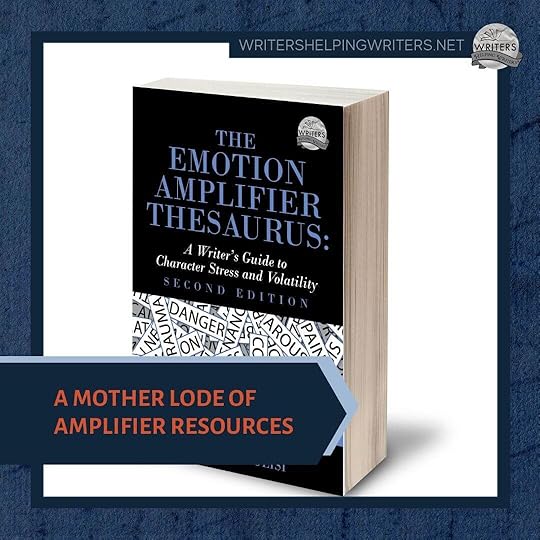
Angela and I have been busy bees the past few months, creating as much content as we could surrounding emotion amplifiers���a little-known storytelling element that’s great for elevating a character’s emotions and setting them up for overreactions, misjudgments, mistakes, and increased conflict.
The information we’ve learned about amplifiers could fill a book, so that’s what we did���published an actual, real-live book that’s chock full of this content and is available for purchase. The Emotion Amplifier Thesaurus is the only resource in existence that covers this topic, so that’s the best place to go for more information.
But if you’re curious about a certain aspect of amplifiers or you’d rather get your info in bite-sized pieces, you might find the following links helpful.
Posts, Podcasts, and PDFsWhat is an Emotion Amplifier?
The Connection between Amplifiers and Emotional Stress
Why You Want Your Character to Lose Control (and How Amplifiers Get Them There)
Build Reader Empathy by Using Amplifiers to Create Common Ground
Does Your Scene Need More Tension? Add an Amplifier!
How Amplifiers Can Create Much-Needed Inner Conflict
Use an Amplifier to Help Your Character Resolve Their Inner Conflict
Using Amplifiers to Show Character Growth
Use Amplifiers to Motivate Emotionally Challenging Characters
Why Amplifiers Should be Your Antagonist’s Go-To Weapon
10 Ways Amplifiers Benefit Your Story
We���ve also added the appendix tools from this book to��our Tools page��for your own personal use:
Using Emotion Amplifiers to Destabilize a Character . A brainstorming list of ideas on how emotional volatility can alter your character���s responses and put them on a crash course with regret Emotional Reasoning: Weigh-And-Measure Questions . Questions your character may ask themselves (or avoid asking) when they’re struggling with cognitive dissonanceDecision-Making Crossroads��Tool. Use this to explore the biases, personal beliefs, emotional considerations, and other factors that will drive your character’s decision making process when they’re facing a challengeOther Mother Lode PostsIf you found this collection of resources helpful, you might be interested in some of our other compilation posts.
How to Write about Character Occupations
How to Show (Not Tell) Character Emotions
How to Create Phenomenal First Pages
How to Write Conflict that Has Maximum Impact
How to Write about Your Character���s Pain
How to Write about a Character���s Emotional Wounds
How to Use Talents & Skills to Further Your Story & Individualize Characters
The post A Mother Lode of Resources on Emotion Amplifiers appeared first on WRITERS HELPING WRITERS��.
June 25, 2024
How Are Character Archetypes Different from Tropes?
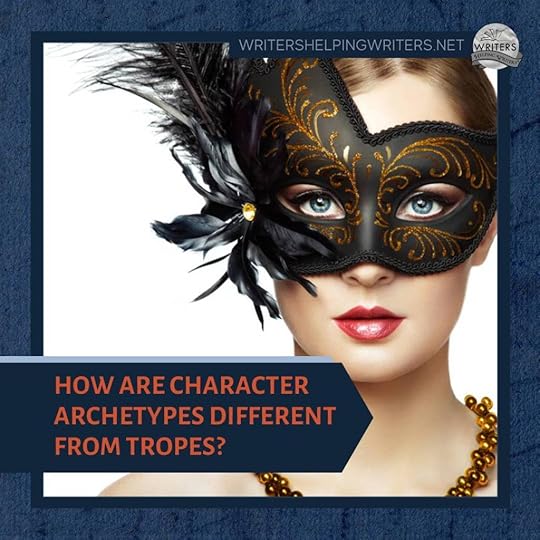
What exactly is a character archetype? How many are there? And how are they different from character tropes?
These are the questions that were keeping me up at night as Angela and I started to research this thesaurus at our blog. So, as I often do when I���m confused by terminology, I started with a generic definition.
Archetype: a prototype that can be copied, adapted, or used to create other versions
Okay, so a character archetype is a common kind of character that others are fashioned after. That led to my next question: if there are certain prototypes off which other characters are patterned, what are those original archetypes? I went looking and got buried in a deluge of contradictory information. So many lists, each with its own variety of characters. Some people called them archetypes, others called them tropes, and there was very little documentation or references to verify what I was seeing.
As a truth-seeker, the lack of consensus was driving me crazy. So I armed myself with chocolate and did a deep dive into psychology���directly to the source of where character archetypes began and how they evolved. I���m clear on this now, and I���m excited to share what I���ve learned with you.
Archetypes in PsychologyThe term ���archetype��� has been referenced in various historical documents all the way back to the time of Christ, so it���s by no means a new concept. But it wasn���t until the early 1900s that Carl Jung, a cohort of Freud���s, applied the term to psychology and brought it into the mainstream.
Jung had studied many myths, fairy tales, stories, religions, and dreams throughout history and realized that there were repeated events, figures, and motifs in these narratives���despite them coming from wildly disparate cultures and time periods. After a ton of research and discussion on the subject, he deduced that there are 12 archetypical figures that are common to the human experience and have become part of the stories we tell. Definitions vary, but here are Jung���s character archetypes.
The Caregiver: Caregivers are helpers���typically categorized as supportive, selfless, and nurturing.The Creator: Imaginative and driven, creators are the artists, inventors, and scientists who are driven to come up with something new and innovative.The Explorer: Explorers are adventurous and are intrigued by the unknown. Where others quail, explorers are keen to explore new places and ideas and go where no one has gone before.The Hero: Heroes are driven to right wrongs and prove their own worth. They often achieve their goals by employing their own specific mix of strengths, talents, and skills.The Innocent: Morally upright and blind to the evils of the world, innocents are dreamers and optimists who have good intentions and tend to do the right thing.The Jester: As comedians and tricksters in the story, jesters make light of serious things and provide comic relief. They often impart wisdom through their shenanigans.The Lover: Lovers are romantics who are all heart. They’re highly relational and are guided by their passions.The Magician: For magicians, the pursuit of knowledge isn’t enough; fulfillment only comes through understanding and mastering the seemingly unknowable. For this reason, they make great shamans, seers, and wise men and women.The Orphan: Orphans are characterized by trauma, neglect, and/or rejection. Having lost their own family (or never having one to begin with), they’re driven by a need to belong and will go to great lengths to find acceptance.The Rebel: Rebels are out-of-the-box thinkers who like to push boundaries and are undaunted by chaos. They���re often the catalyst for change.The Ruler: Rulers are leaders with a measure of control over others. Their intentions���good or bad���and the level to which they desire power will determine the kind of ruler they are.The Sage: Sages are wise, always seeking knowledge, but they also desire to impart their learnings to others. This makes them ideal mentors and parental figures.According to Jung, character archetypes are recurring figures that show up in the dreams of all people and the stories of all cultures. They can be part of any narrative, regardless of the time period or audience. This universality is what makes a character an archetype. It���s why these 12 made the cut.
Jung���s is the original list of archetypes. Since he pretty much invented the concept, I feel good using this as my go-to index. But there���s another list many people like to use, and it has merit because its archetypes are established according to their roles in storytelling.
Archetypes in Storytelling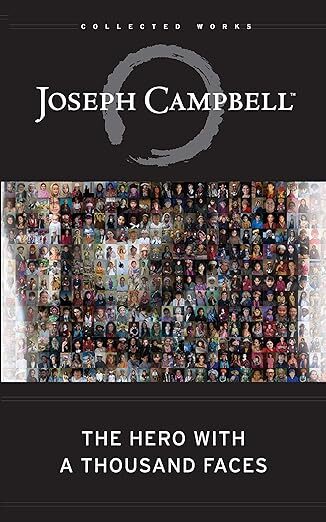
Forty or so years after Jung, Joseph Campbell was also exploring narratives throughout history and noticed a similar pattern in their structure. He discovered that many of these stories contained the following archetypal structure, which he titled The Hero���s Journey:
���A hero ventures forth from the world of common day into a region of supernatural wonder: fabulous forces are there encountered and a decisive victory is won: the hero comes back from this mysterious adventure with the power to bestow boons on his fellow man.���
~Joseph Campbell, The Hero with a Thousand Faces
Through his exploration of this mythical structure (and greatly influenced by Jung���s teachings) Campbell identified some characters that appear again and again in these stories over time. But while his thoughts on the subject were insightful and inspirational, his writings weren���t the easiest to understand for many lay people. And this is why we all owe a debt of gratitude to Christopher Vogler.
Vogler was a devotee of Campbell���s and used his ideas frequently in his career as a movie script analyst. They were so helpful in troubleshooting and strengthening the stories he read that Vogler wrote a seven-page guide about The Hero���s Journey and began distributing it to his colleagues at Disney. It soon became required reading, and the demand for his pamphlet was so great that he expanded it into a book called The Writer���s Journey: Mythic Structure for Writers. Twenty-five years later, it���s still being sold and has become a foundational text for storytellers.
In this book, Vogler distilled Campbell���s ideas into an accessible list of 8 character archetypes:
Hero: The protagonist who has a goal to achieve, will undergo change or growth along the way, and will need to make some kind of sacrifice to succeedMentor: A positive figure who helps or trains the heroThreshold Guardian: A creature, person, or force who guards the gateway to the new world the hero must enterHerald: Someone who issues a challenge to the hero or informs them of significant change to comeShapeshifter: A character whose nature is shifting and unpredictable, causing uncertainty and doubt for the heroShadow: Someone or something that opposes the hero, often manifesting as a villain, antagonist, or enemyAlly: A character who accompanies, assists, complements, or constructively challenges the hero along their journeyTrickster: A mischievous character who often shares wisdom while dispelling tension through comic reliefThese are essentially a reconfiguring of Jung���s archetypes so they���re defined by the role each plays in a story. As writers, we can see how valuable this perspective can be.
When it comes to archetypes, you can���t go wrong with either of these breakdowns. Personally, I prefer Jung���s because his is the original model���the prototype���that everything else is based on. But both are valid for establishing the kinds of characters you���ll want to include in your story.
Now. If these 12 or 8 characters are the only true archetypes, what about all the rest of the character types you find on the internet? There are dozens and dozens of listings containing 25, 50, 200+ characters. The queen bee, the mad scientist, the nerd, the class clown, the hot billionaire���are these archetypes, as well? If not, what are they?
Simply put, these are character tropes, not archetypes. Here���s why.
Character TropesA literary trope is a recurring element that���s frequently used across narrative works. This makes character tropes very similar to archetypes. The difference is that archetypes, by Jung���s original criteria, are universal in nature and can be found in any story from any culture and time period.
If a character couldn���t appear in multiple narratives from multiple time periods for multiple audiences, then that character isn���t an archetype; it���s a trope. And most of the time, the character is a trope because it has been culturally influenced so it only works within a certain culture or timeframe.
Let���s take the nerd trope as an example.

Conventionally, nerd characters are highly intelligent, socially awkward, and are hyper-focused on topics most people aren���t interested in. They���re also clueless about fashion and style. This rendering is specific to Western culture and wouldn���t translate for certain other people groups. This makes it a trope rather than an archetype.
Class clowns need a classroom or school setting, so this character is a trope.
You wouldn���t find hot billionaires in a culture without an ��ber-rich demographic, so this character is a trope���
It���s a relatively easy litmus test for determining whether a character is trope or an archetype.
Another clue that you���re dealing with a trope is when the character is clearly a derivative or��modified version of an archetype. The class clown, for example, is a trope based on the Jester. The nerd is a form of either the Sage or Magician. The queen bee is a specific kind of Ruler, and so on.��
A Quick SummarySo, to sum all of this up���.
Character archetypes are universal figures that are repeated through narratives across cultures, time periods, and locations.While there are many lists of archetypes, the most commonly accepted are the ones established by Carl Jung and by Joseph Campbell/Christopher Vogler. A character trope is a familiar figure that recurs in many stories, but unlike archetypes, it isn���t universally recognizable.A character trope can also be a modified���often more specific���version of an archetype.On the surface, it���s not easy to the see the difference between these kinds of characters. But this historical study has helped me understand things better. I hope it also clarifies these important character elements for you.
Check out the Character Type and Trope Thesaurus!
The upside of tropes is that they���re familiar to readers, who will recognize them and immediately know the role they���re meant to play. The downside? They���ve been used so many times that they can easily become clich��d and predictable. But with The Character Type and Trope Thesaurus, they no longer have to be.
Use this resource to familiarize yourself with the commonalities for a certain kind of character while also exploring ways to elevate them and make them memorable, more interesting, and perfectly suited for the story you want to tell.
Additional Resources:
The Archetypes and the Collective Unconscious, CJ Jung
The Hero with a Thousand Faces, by Joseph Campbell
The Writer���s Journey: Mythic Structures for Writers, by Christopher Vogler
The post How Are Character Archetypes Different from Tropes? appeared first on WRITERS HELPING WRITERS��.
June 19, 2024
Phenomenal First Pages Contest – Guest Editor Edition

Hey, wonderful
writerly people!
It���s time for Phenomenal First Pages, our monthly critique contest. So, if you need help with the beginning of your novel, today’s the day to enter for a chance to win professional feedback.
TEN winners will receive feedback on their first five pages!Entering is easy. All you need to do is leave your contact information on this entry form (or click the graphic below). If you are a winner, we’ll notify you and explain how to send us your first page.
 Contest DetailsThis is a 24-hour contest, so enter ASAP.Make sure your contact information on the
entry form
is correct. Ten winners will be drawn. We will email you if you win and let you know how to submit.Please have your first five pages ready in case your name is selected. Format it with��1-inch margins, double-spaced, and 12pt Times New Roman font.��All genres are welcome except overtly religious books The editor you’ll be working with:Erica Converso
Contest DetailsThis is a 24-hour contest, so enter ASAP.Make sure your contact information on the
entry form
is correct. Ten winners will be drawn. We will email you if you win and let you know how to submit.Please have your first five pages ready in case your name is selected. Format it with��1-inch margins, double-spaced, and 12pt Times New Roman font.��All genres are welcome except overtly religious books The editor you’ll be working with:Erica Converso

I���m Erica Converso, author of the Five Stones Pentalogy (affiliate link). I love chocolate, animals, anime, musicals, and lots and lots of books ��� though not necessarily in that order. In addition to my work as an author, I have been an intern at Marvel Comics, a college essay tutor, and a database and emerging technologies librarian. Between helping adult patrons in the reference section and mentoring teens in the evening reading programs, I was also the resident research expert for anyone requiring more in-depth information for a project.

As an editor, I aim to improve and polish your work to a professional level, while also teaching you to hone your craft and learn from previous mistakes. With every piece I edit, I see the author as both client and student. I believe that every manuscript presents an opportunity to grow as a writer, and a good editor should teach you about your strengths and weaknesses so that you can return to your writing more confident in your skills. Visit my website astrioncreative.com for more information on my books and editing and coaching services.
Sign Up for Notifications!If you���d like to be notified about our monthly Phenomenal First Pages contest, subscribe to blog notifications in this sidebar.
Good luck, everyone. We can’t wait to see who wins!
PS: To amp up your first page, grab our First Pages checklist from One Stop for Writers. For more help with story opening elements, visit this Mother Lode of First Page Resources.
The post Phenomenal First Pages Contest – Guest Editor Edition appeared first on WRITERS HELPING WRITERS��.
Writers Helping Writers
- Angela Ackerman's profile
- 1022 followers



